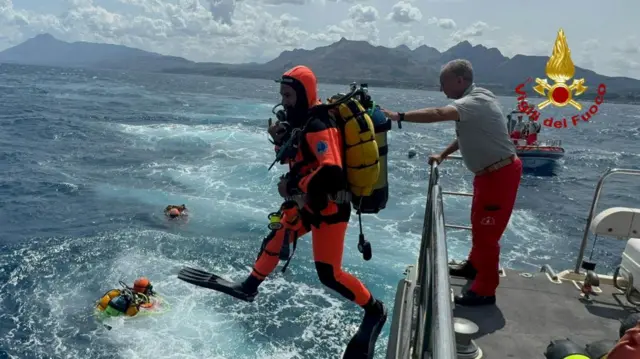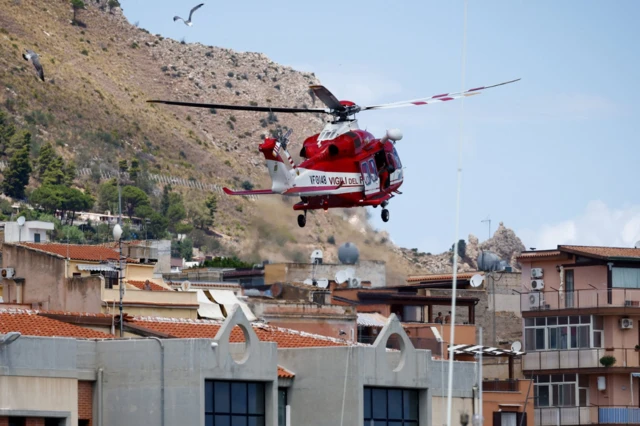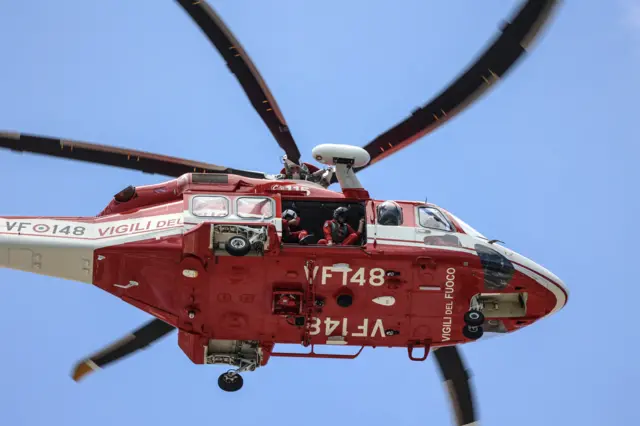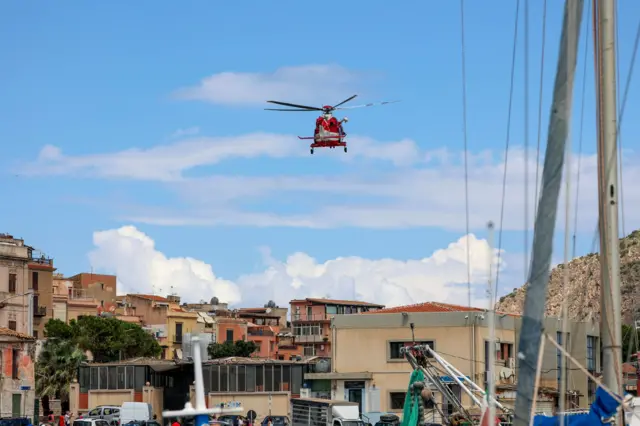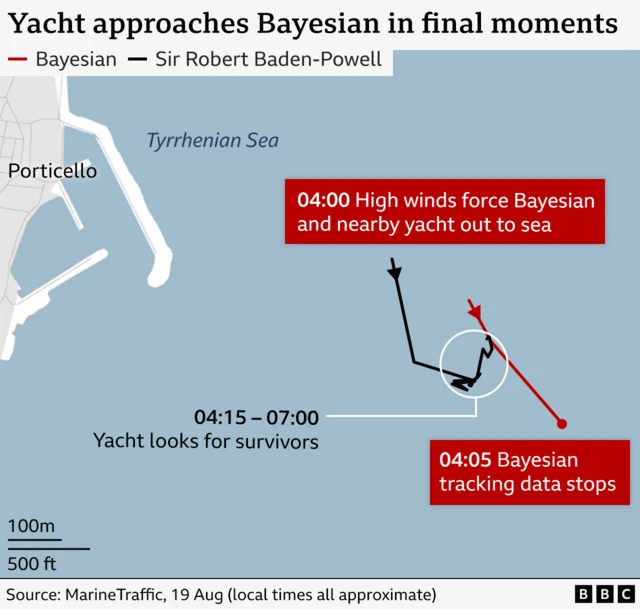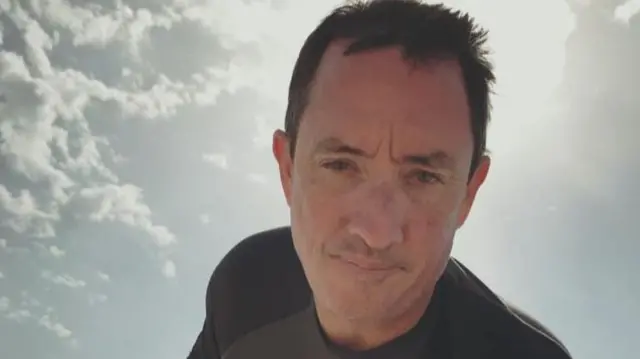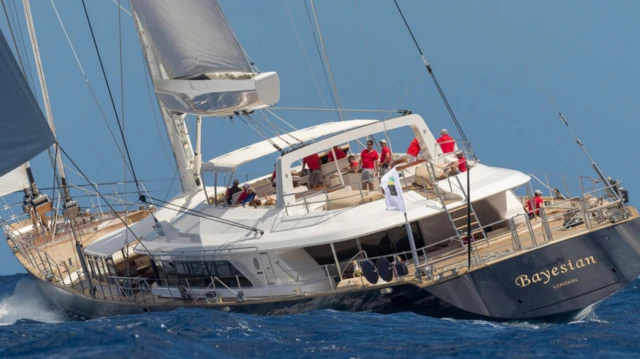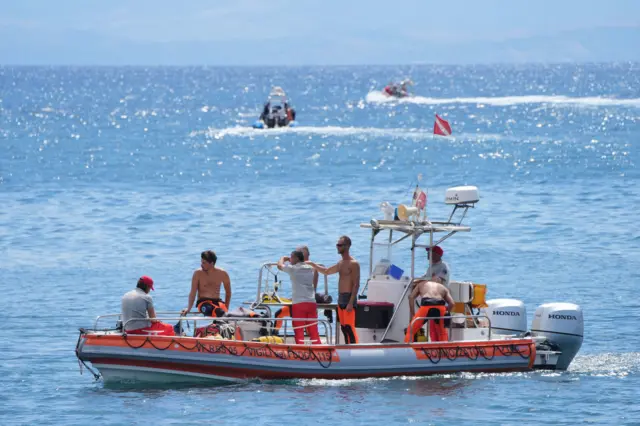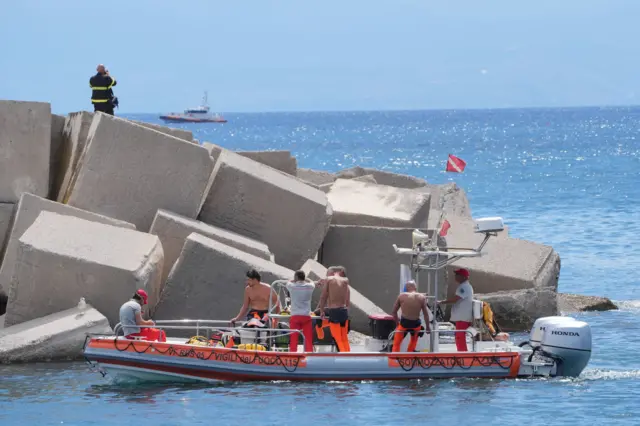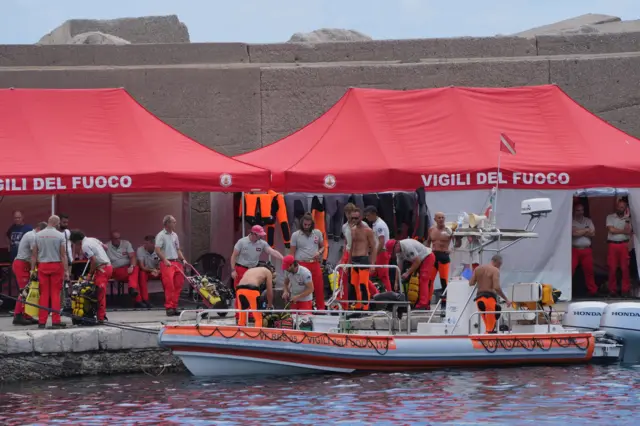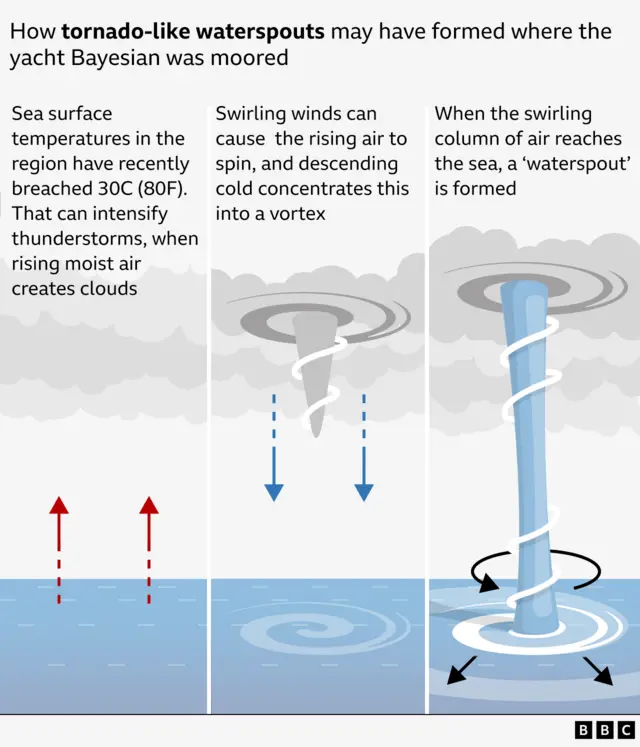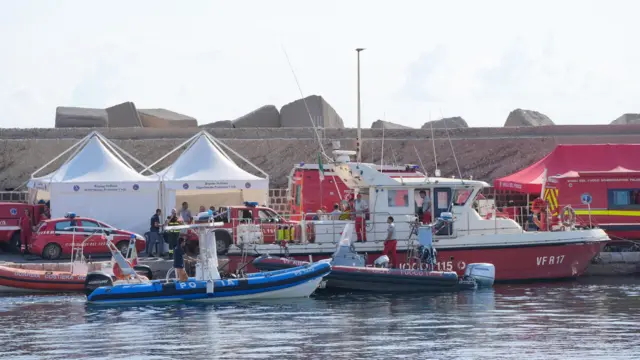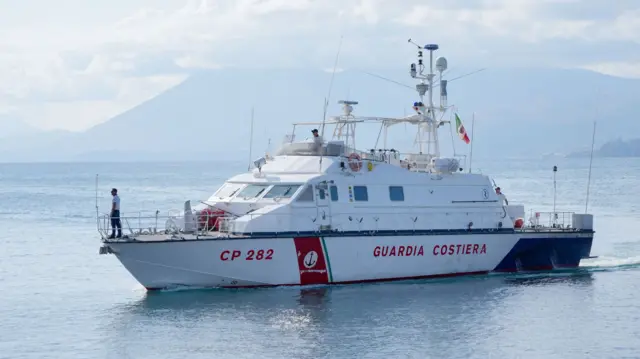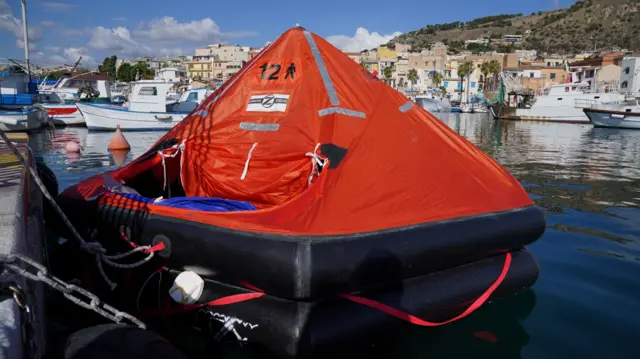Body seen inside yacht is male - reportspublished at 14:58 BST 21 August 2024
One of the bodies spotted inside the hull of the yacht is believed to be that of a man, according to reports from Reuters and Italian media.
Divers are still at the scene working to recover the bodies - the second and third victims of the sinking.
There has been no official word from Italian authorities on the identities of those who've died.

